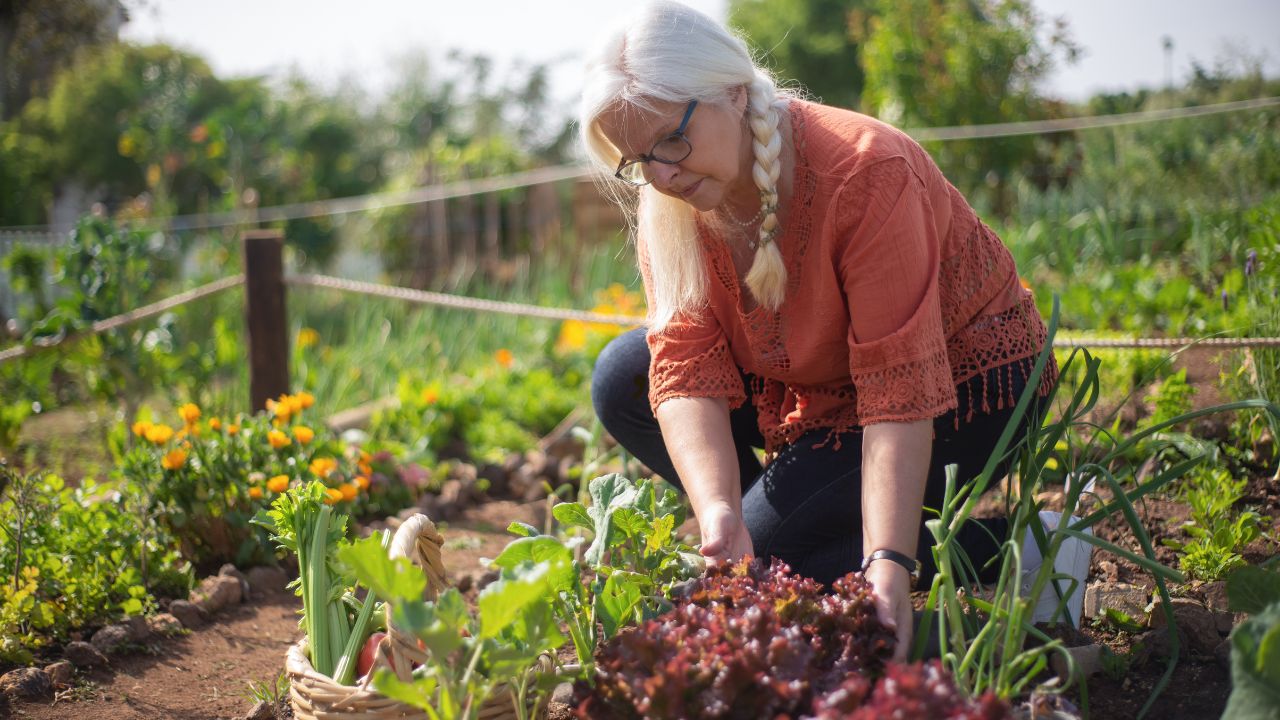Fertilizing container plants is essential for maintaining healthy growth and ensuring your plants receive the necessary nutrients to thrive. Unlike plants grown in the ground, container plants have limited access to nutrients because they rely on the confined soil in their pots. Regular fertilization provides these nutrients, helping plants develop strong roots, lush foliage, and abundant flowers or fruit.
1. Choose the Right Type of Fertilizer
Overview: Fertilizers come in various forms—granular, liquid, slow-release, and organic. Choosing the right type of fertilizer is crucial to providing the nutrients your plants need over time.
Why It Matters: Different fertilizers release nutrients at different rates. Understanding your plant’s needs will help you pick a fertilizer that ensures consistent growth and avoids over-fertilization.
Types of Fertilizers:
- Granular Fertilizers: These are dry fertilizers that you can sprinkle on the soil. They release nutrients slowly over time, making them a good choice for long-term feeding.
- Liquid Fertilizers: Liquid fertilizers are mixed with water and applied directly to the soil. They provide an immediate nutrient boost and are ideal for fast-growing plants or when plants show signs of nutrient deficiency.
- Slow-Release Fertilizers: These fertilizers come in pellet or coated form and release nutrients gradually over time. They are ideal for busy gardeners as they require fewer applications.
- Organic Fertilizers: Organic options, such as compost, manure, or fish emulsion, provide nutrients naturally and improve soil health over time.
2. Understand Your Plant’s Nutrient Needs
Overview: Different plants have different nutrient requirements. Leafy greens, for example, require more nitrogen, while flowering plants need more phosphorus.
Why It Matters: Providing the right balance of nutrients ensures that your plants grow healthily and produce flowers, fruits, or vegetables efficiently.
Key Nutrients:
- Nitrogen (N): Promotes leafy green growth. Ideal for vegetables like lettuce or spinach and foliage plants.
- Phosphorus (P): Encourages strong root development and flowering. Important for fruiting plants like tomatoes or flowering plants like roses.
- Potassium (K): Supports overall plant health and disease resistance. Vital for fruit-bearing plants and those prone to pests or diseases.
3. Follow the Fertilizer’s Instructions Carefully
Overview: Each fertilizer comes with specific instructions on how much to use and how often to apply it. Following these guidelines prevents over- or under-fertilizing, which can harm your plants.
Why It Matters: Over-fertilizing can lead to nutrient burn, damaging your plants, while under-fertilizing may result in poor growth and fewer blooms or fruits.
How to Apply:
- Measure Correctly: Always measure the recommended amount of fertilizer, whether it’s liquid or granular. Avoid estimating, as too much fertilizer can harm the plants.
- Dilute Liquid Fertilizers Properly: When using liquid fertilizer, make sure to dilute it according to the package instructions to avoid burning the plant’s roots.
- Space Applications: Spread out fertilizer applications as recommended. For most fertilizers, this is every 2-4 weeks, depending on the plant’s growth cycle and the type of fertilizer used.
4. Fertilize During the Growing Season
Overview: Plants need the most nutrients during their active growing seasons, typically spring and summer. Fertilizing during these periods supports rapid growth and development.
Why It Matters: Applying fertilizer at the right time ensures plants receive essential nutrients when they are most needed. Fertilizing during dormant periods can lead to nutrient buildup in the soil and potential plant stress.
When to Fertilize:
- Spring: As plants begin to grow, start fertilizing to encourage healthy root and leaf development.
- Summer: Continue fertilizing to support blooming and fruiting.
- Fall/Winter: Reduce or stop fertilizing as plants enter dormancy. Over-fertilizing in these periods can lead to unnecessary growth and weakened plants.
5. Use Organic Fertilizers for Long-Term Soil Health
Overview: Organic fertilizers, such as compost or worm castings, not only provide nutrients but also improve the overall structure and health of the soil.
Why It Matters: Organic fertilizers release nutrients slowly and improve soil microbial activity, which enhances nutrient uptake and supports long-term plant health.
Organic Fertilizer Options:
- Compost: Adds organic matter to the soil, improving its structure and water retention while releasing a range of nutrients.
- Fish Emulsion: A liquid organic fertilizer rich in nitrogen, ideal for promoting lush growth in leafy plants.
- Worm Castings: Improve soil texture and add beneficial microbes, enhancing nutrient absorption for the plant.
- Bone Meal: Provides phosphorus for flowering plants, encouraging bloom production.
6. Watch for Signs of Nutrient Deficiency
Overview: Plants will often show signs when they’re not getting enough nutrients. Common signs include yellowing leaves, stunted growth, and poor flowering or fruiting.
Why It Matters: Recognizing nutrient deficiencies allows you to adjust your fertilization routine promptly and avoid long-term damage to your plants.
Signs of Nutrient Deficiency:
- Nitrogen Deficiency: Yellowing leaves, especially older leaves, and slow growth.
- Phosphorus Deficiency: Purple or reddish tint on leaves, especially along the edges, and poor flowering.
- Potassium Deficiency: Brown leaf tips, wilting, and weak stems.
Corrective Actions:
- Use a balanced fertilizer if you notice general nutrient deficiencies.
- Apply targeted fertilizers, like nitrogen-rich liquid feeds or phosphorus-heavy bone meal, to address specific deficiencies.
7. Fertilize After Watering
Overview: Fertilizing immediately after watering helps prevent fertilizer burn and ensures the nutrients reach the plant’s roots evenly.
Why It Matters: Dry soil can cause fertilizers to concentrate too much in one area, potentially harming the plant. Watering first ensures even nutrient distribution.
Steps:
- Water Thoroughly: Before applying fertilizer, water your container plants to ensure the soil is evenly moist.
- Apply Fertilizer After Watering: Once the soil is moist, apply the fertilizer according to the instructions.
- Water Again if Necessary: For granular fertilizers, a light watering after application can help the nutrients penetrate the soil more effectively.
8. Rotate Fertilizers for Balanced Nutrition
Overview: Using the same fertilizer all the time may lead to an imbalance of certain nutrients in the soil. Rotating fertilizers or using a balanced mix ensures plants receive a well-rounded nutrient profile.
Why It Matters: Different stages of growth may require different nutrients. Rotating fertilizers helps address these changing needs and keeps your plants healthy and productive.
How to Rotate:
- Switch Between NPK Ratios: For example, start with a high-nitrogen fertilizer during early growth, then switch to one higher in phosphorus when the plant starts flowering.
- Alternate Organic and Inorganic: Combining organic fertilizers like compost with a balanced inorganic fertilizer can provide both immediate and long-term nutrient benefits.
9. Flush the Soil Periodically
Overview: Over time, excess salts from fertilizers can build up in the soil, especially in containers, which can lead to root burn and stunted growth. Flushing the soil with water helps remove these salts.
Why It Matters: Keeping the soil free of excess fertilizer salts ensures your plants continue absorbing nutrients efficiently and stay healthy.
How to Flush the Soil:
- Water Heavily: Every 2-3 months, water the container thoroughly until water flows out of the drainage holes. This flushes out accumulated salts.
- Use Distilled Water: For plants sensitive to salts, use distilled or rainwater to flush the soil, as tap water may contain salts that contribute to buildup.
10. Avoid Over-Fertilizing
Overview: More fertilizer doesn’t necessarily mean better growth. In fact, over-fertilizing can damage plants by causing fertilizer burn, inhibiting growth, and even killing the plant.
Why It Matters: Too many nutrients can lead to salt buildup in the soil, leaf burn, and unhealthy growth patterns. Balanced fertilization supports long-term health without overwhelming the plant.
How to Prevent Over-Fertilization:
- Follow Instructions Closely: Always use the recommended amount of fertilizer and don’t fertilize more frequently than advised.
- Watch for Signs of Over-Fertilization: If leaves turn brown at the edges or roots become stunted, cut back on fertilization and flush the soil with water.
Conclusion
Fertilizing container plants effectively is key to maintaining vibrant, healthy plants. By choosing the right type of fertilizer, understanding your plant’s specific needs, and applying fertilizer correctly, you can promote strong growth, lush foliage, and abundant blooms or fruits. Remember to fertilize during the growing season, flush the soil periodically, and avoid over-fertilizing for the best results.
FAQ
1. How often should I fertilize my container plants?
It depends on the type of fertilizer. Slow-release fertilizers need to be applied every few months, while liquid fertilizers may need to be applied every 2-4 weeks.
2. Can I use the same fertilizer for all my container plants?
While you can use a balanced fertilizer for most plants, it’s better to choose specific fertilizers based on the plant’s needs (e.g., more phosphorus for flowering plants).
3. What are the signs of over-fertilizing?
Common signs include brown leaf edges, wilting, and slow growth despite frequent fertilization. You may also see white salt buildup on the soil surface.
4. Is organic fertilizer better for container plants?
Organic fertilizers improve soil health over time, making them a good option for long-term use. However, they may not provide nutrients as quickly as synthetic fertilizers.
5. Should I fertilize my plants in winter?
Most plants go dormant in winter, so fertilizing during this time can do more harm than good. Wait until spring to resume fertilization.


